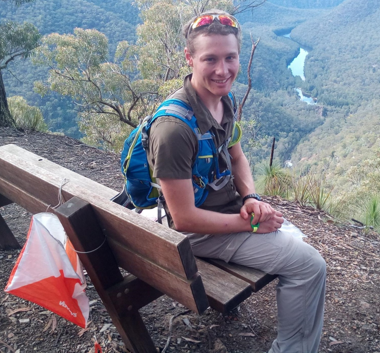
A rogaine is just about the antithesis to a conventional fashion show. Indeed, if one was looking for an event where they could find the least fashionable looking human beings, a 24-hour rogaine would undoubtedly be a forerunner.
But the truth is that rogaining has a fashion of its own. Most rogainers are not intentionally daggy people; rather they are simply notoriously practical about the purposes of their clothing to protect them as they bash around the bush for many hours, something that is mutually exclusive with today’s trendsetting.
As we continue our series about rogaining gear this month’s focus is shirts, pants and other base clothing. Let me clarify that, by following the advice hereafter, it will not help you win a Ms/Mr Universe pageant; however I do hope that it will help protect you from finishing a rogaine without excessive chafing, rashes, scratches and other discomfort.
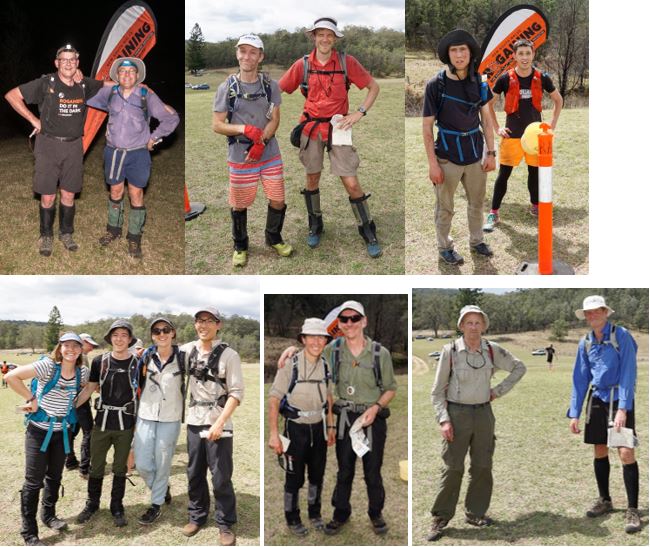
Two longtime mixed veteran rogaining partnerships join me to share their insights on rogaine base clothing with the questions below.
Toni Bachvarova and Andrew Smith have made it to almost every NSW rogaine since 2013, as well as many interstate and international 24-hour events, for which they have a particular passion. They are also enthusiastic volunteers, having set the popular Pagoda Palooza Autumngaine last year and the Gone W’rong NSW Champs in 2017, as well as setting a new standard of mapping using the LIDAR dataset.
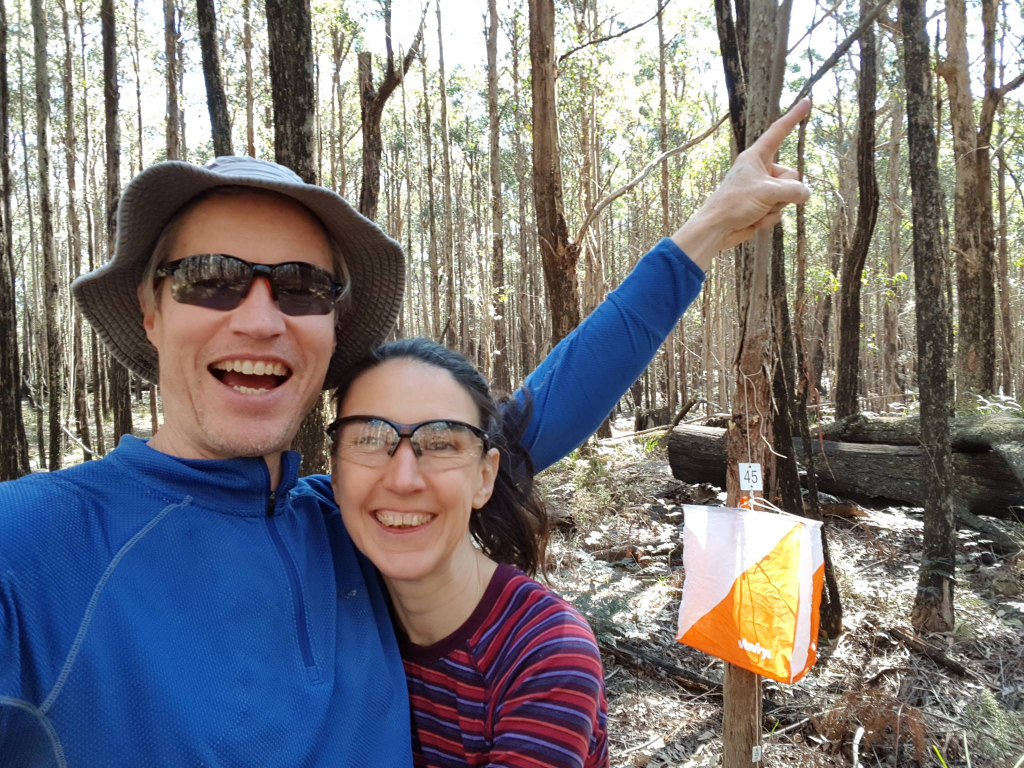
Tristan White: What do you do for work, when did you do your first rogaine and what makes you keep coming back?
Toni Bachvarova: I am a freelance graphic designer. My first rogaine was the Navshield in 2012 at Colo Heights. It was only the 1-day event, indisputably one of the scrubbiest courses, but it met and exceeded my expectations so I was keen for more of it straight away. My first NSWRA rogaine was Lake Macquarie in the same year. For me rogaining is the perfect combination of bushwalking, strategy and endurance.
Andrew Smith: I’m a software engineer. First rogaine was the 1998 Leura PP. Firstly, I love being in the bush, and navigating through it has always been fun. Rogaining allows me to do it for longer.
TW: Firstly, give us a run-down of what base clothing you would generally wear (note: jackets, gloves and headbands will be covered in a separate article).
TB: The tops I usually choose for rogaining are of stretchy material, rather than a sturdy shirt – Merino for cooler months, thinner Merino blend for warmer weather, thin Merino t-shirts or Polartec-delta tops in hotter weather. I don’t struggle with the heat as much as with cold weather, so I don’t mind warmer tops as opposed to cooler shirts that might be clingy when wet. For hot weather I haven’t found a better material than polartec-delta it has soft, non-sticky feeling and dries fast! The downside is all these materials tear quite easily while bushbashing. But the comfort they provide is worth the sacrifice.
AS: Being very talented in the sweating department, choice of shirt material makes a big difference to my body temperature control and performance.
- Hot weather – Staying hydrated is a real challenge and wearing clothing that keeps me as cool as possible is very important. In hot/humid weather I wear a top from Kathmandu that they don’t make anymore. It’s an Elastane/Nylon blend that is very cool when it gets wet and is quite tear resistant in the bush (until it gets a bit older).
- Mild weather – Sweat control is still the main issue. I find anything made from Polartec™ Delta™ is the best for temperature control/comfort. The downside is the material tears very easily in the bush and they don’t last long. They’re also a little more abrasive and need band aids covering the nipples and some tape covering the lower back to prevent chaffing.
- Cold weather – Hydration is no longer an issue but staying warm with clothes drenched in sweat is. I find Polypropylene is still the best in these situations. Odour control is not the best, but it is by far the most comfortable material I’ve found in these conditions. It wicks well, feels dry on the skin and is warm.
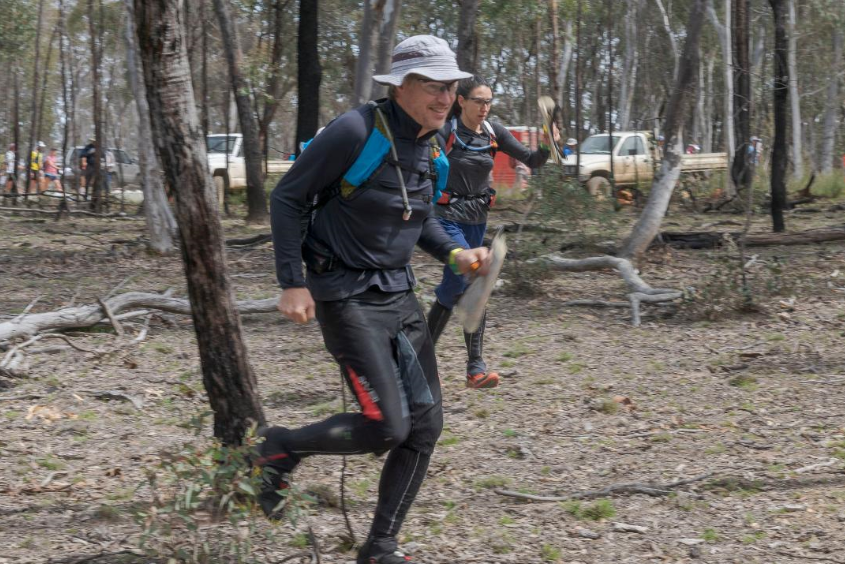
TW: What are the pros and cons to wearing long sleeve shirts in favour of short sleeves?
TB: Main benefits of long sleeves are scratch and sun protection. For 12 or 24-hour rogaines (which are usually in cooler weather), I’d normally wear long sleeve. Don’t mind my arms getting scratched but after 7-8 hours of bushbashing, the skin gets sensitive and I find myself unconsciously trying to go around the obstacles instead of through them, which costs time. For shorter rogaines, especially the ones mostly on tracks, short sleeves are fine.
AS: I prefer long sleeve tops. I find they keep me cooler when I’ve drenched them in sweat, they reduce wear on the skin when bush bashing and I don’t need to put sun screen on my arms.
TW: Does colour make any difference?
TB: Bright colours are definitely not recommended if you’re aiming not to be seen by other teams when nearby a checkpoint!
AS: Being a bit competitive I prefer colours that don’t stand out. No point in giving away your position unless you’re lost. If I wasn’t as competitive I’d probably wear something orange and white because I find that extremely distracting when I see other people in those colours. It would be a bit of fun I think.
TW: What are orienteering pants and what is special about them?
TB: Orienteering pants are made of tough polyester which is pretty resistant to tear. They are lightweight, well ventilated and dry quickly. They are also designed to provide freedom of movement in the knees.
The only downside is often they don’t have any pockets to warm your hands or keep a tissue, etc. Brands of choice in Australia are Trimtex and Bryzos.
AS: Orienteering pants are specifically designed for bush orienteering and therefore rogaining. They are cool, give good protection against the bush and don’t resist leg movement even when drenched in sweat.
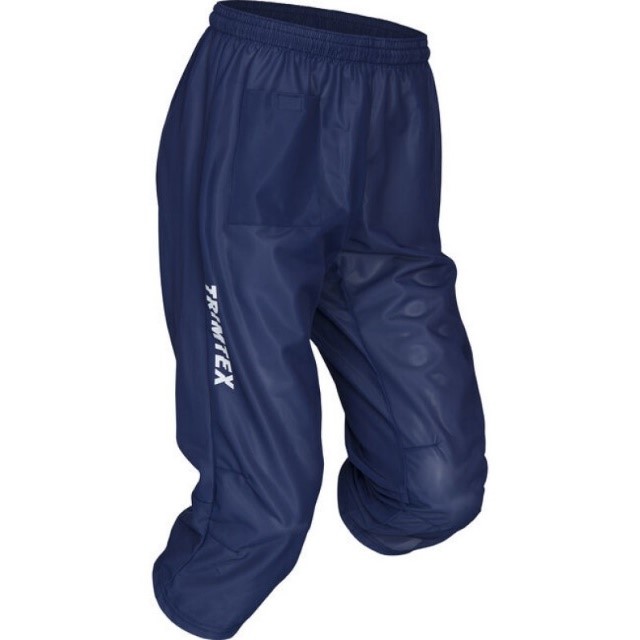
TW: What are the pros and cons to shorts vs. pants?
TB: Since I discovered orienteering pants I’ve never looked back! Knee length or short pants have always been my choice – don’t like the restrictiveness of long pants.
AS: I don’t think there’s any pros for shorts unless you want to show off yours legs at work on Monday. Anything that prevents you from plunging into some thick bush is a negative. And legs with the top layer of skin worn off will do that. Your legs need to be at least mostly covered, if not all covered.
TW: Can any material of pants be used (or added) to prevent being spiked by thick scrub above the tops of the gaiters?
TB: I normally don’t. Thermal trousers tend to collect spikes rather than protect from them. Any tougher material could come with the downside of being too hot or too stiff to allow for free movement.
AS: Nope. Canvas would prevent a lot of spikes but would be way too hot. Just get used to the spikes.
TW: Most rogaines recommend that gaiters are worn when there’s a significant amount of off-track navigation. Are there any occasions that they would be unnecessary/ discretionary?
TB: For me gaiters provide three benefits – protect from scratches, protect from snakes and prevent debris or seeds from getting into the shoes. Most of the times in bush rogaines I’d wear gaiters even if I don’t expect much scrub or snakes as they avoid wasting time getting stuff out of my shoes. For tracked rogaines ankle gaiters are fine.
AS: Nope. It doesn’t matter what the setter says – you’ll always run into way thicker bush than specified somewhere on the course. It’s one of the laws of rogaining.
TW: There are several types of gaiters, ranging from ones to go around the ankle, to ones covering the whole shin with a loop under the shoe. How should a rogainer go about choosing a pair?
TB: I’d use gaiters I’ve worn before and am confident are comfortable. As with the rest of the gear, it is always a good idea to use gear you are comfortable and confident in. I used to wear classic canvas gaiters and they are comfortable and tough, however I could never strap them tight enough at the top to prevent sticks and leaves getting in. Recently I’ve been using orienteering shin gaiters in combination with ankle gaiters. It also depends on the terrain and vegetation. The orienteering gaiters aren’t very resistant to tough bush when you go hard.
AS: Choose a pair that marries nicely with your shoes and extends to just below your knees. Most full length gaiters will do this.
TW: What is special about orienteering gaiters and how are they suited to rogaining?
TB: The orienteering gaiters are comfortable and low maintenance. They are great for rogaining if you don’t mind the fact they might not last as long as the classic canvas/ Gore-Tex gaiters.
AS: Orienteering gaiters hug your lower legs unlike your standard bushwalking gaiters and are armoured on the front with thin elastic material on the back. They’re a pain to put on and take off and need to be used with an ankle gaiter, but I find them much cooler and stay in place better that bushwalking gaiters. (Although I always seem to snag holes in the elastic material at the back on the first run.) I use Moxi gaiters, the manufacturers of which, after a couple of attempts, have found a bottom strap that lasts way longer than the gaiter itself. An outstanding achievement.

TW: Aside from warmth, what would be the basis that one would want to wear gloves in a rogaine?
TB: I have done a Navshield where full body armour (including glasses) was essential. I don’t normally wear gloves for scratch protection but they could be handy if you think scratches might slow you down.
AS: Warmth is the only reason I’d wear gloves. And it has to get pretty damn cold for that to happen. I’m lucky that my hands don’t get cold easily.
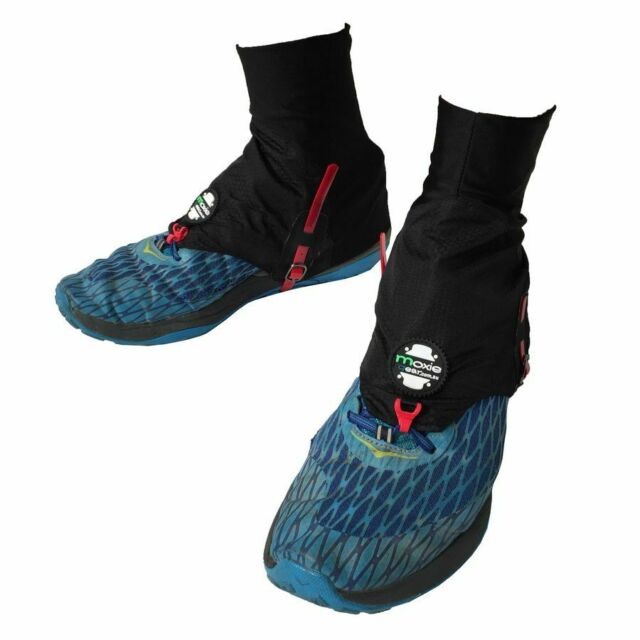
TW: Chafing can be a major issue for rogainers, particularly in the humid and wet. What can be worn or otherwise done to prevent the ravages of chafing?
TB: I am lucky not to be prone to chafing. Sometimes I use Goodsport for blister prevention and anti-chafing.
AS: Chafing has been a big issue for me. I wear running knicks under my orienteering pants to prevent leg chafing. Band aids on my nipples. Tape my lower back to prevent pack chaffing. And most important of all, use an anti-chaffing cream to prevent butt cheek chaffing. I use Good Sport. Tried a few others including GurneyGoo but Good Sport has been the best. Kiwis make some good products. I know some rogainers (e.g. David Williams) have their own recipe.
Mardi and John Barnes (pictured below at Berowra Bewilderness Socialgaine) have been doing rogaines together for over a decade and a half. In addition to often placing very highly in the mixed veterans division, they have a love for the outdoors that includes kayaking, tandem biking and canyoning.
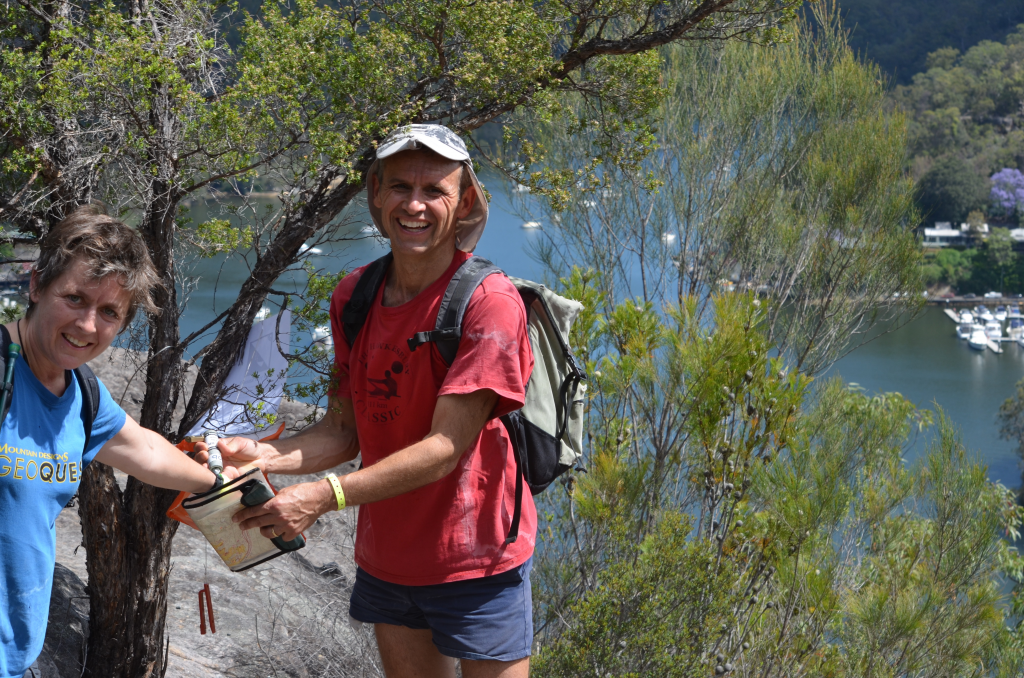
John shares their thoughts on shirts and pants here.
Tops
The choice of shirt is very important, with much consideration going into various aspects of this decision. Firstly, what is available in the wardrobe and this, for us, includes a vast selection of cotton t-shirts that have been acquired from volunteer events or as generous presents (many of which are from the Hawkesbury Canoe Classic). Secondly, the condition of the garment. Too ‘new’ a shirt, should be classified as only for ‘special occasions’ [special in a different way to a rogaine]. However, a shirt with too many holes should be avoided so as not to inhibit progression through the thick scrub, with the fear of the holes catching on branches, then combining to create a garment that should be moved to the rags box before the end of the event. Thirdly, the colour. It is important to be visible to your partner so he/she can follow you through the thickest of scrub. It has also been proven that the colour ‘red’ looks great in photos. Fourthly, it is important to carry an additional warm long sleeve top when the sun has disappeared and the wind has picked up. The availability of free, warm tops from other events is more limited, which makes our decision easier. During the event, it’s important to maintain flexibility in route selection; if you are too cool, walk faster or shuffle along or look for a checkpoint that is located up a hill… simple!!!
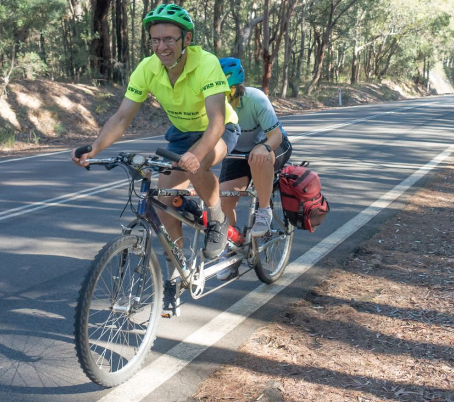
Pants
Long pants/short pants are a personal preference, however, the expectation of the event must be shared with all team members prior to the start regarding going through thick scrub, and walking or running. It is important that all the team have read the pre-event notes of the course prior to packing, noting particularly the thickness of scrub. It is important to note a happy wife creates a happy life. Allowing time for her to zip on/off the pants allows time to assess the map and evaluate the options of adding or skipping checkpoints. It is very important to communicate these plans as it usually ensures that the zipping on/off happens in a timely manner. Mardi hates missing checkpoints and would minimise the zip on/off process if it lead to missing checkpoints. Communication is important!!! My wife says that zip on/off pants allows for temperature variations of day/night and the variations in scrub bashing which does provide an alternative to gaiters.
Gloves
Gloves in a rogaine….. really?
Hmmm, maybe this is a PPE for rogaining Covid-19 times. We’re missing the rogaines over the latest of months…… and keen to resume!
Thank you John, Mardi, Toni and Smiffy! I’m keen for rogaines to resume too and hope to see you at one of them soon!
And I’d greatly appreciate comments from our readership about their choice of clothing, both good and bad experiences.
Good to see Andrew covered off chafing. I used to band-aid my nipples as well, but found that removing the band-aids was more painful than most 100 pointers. Micropore tape works for me and it’s much less painful to remove. I wear trunk styled underwear to prevent leg chafing.
Prone to chafing as well. Also vote for the trunk style underwear, preferably lycra or bamboo. I find cotton still chafes.
A generous dab of lanolin in the creases helps greatly as well. Nothing like sliding around the course well lubricated! “If I could walk like that …”
Does John B still rogaine in sockless Dunlop Volleys? Or is footwear to be mentioned separately?
Sue,
Footwear article was last edition. View it here. http://new.nsw.rogaine.asn.au/get-into-gear-part-3-giving-dodgy-footwear-the-boot/
Sorry I didn’t get John’s words of wisdom for the footwear article 😉
My zip off trousers cut off just below the knee have silicon rubber patches over the knees to help stop scratches in scrubby/prickly terrain. Lots of trouser pockets are useful for holding items which are needed quickly such as lollies, muesli bar, compass, gloves, camera and so on.
I generally use a short sleeve tee shirt with cyclist’s sleeves so my arms don’t get scratched in prickly conditions, I can pull them down to my wrists if I get too hot going up a steep hill, and pull them back up to keep warm in the wind at the top.